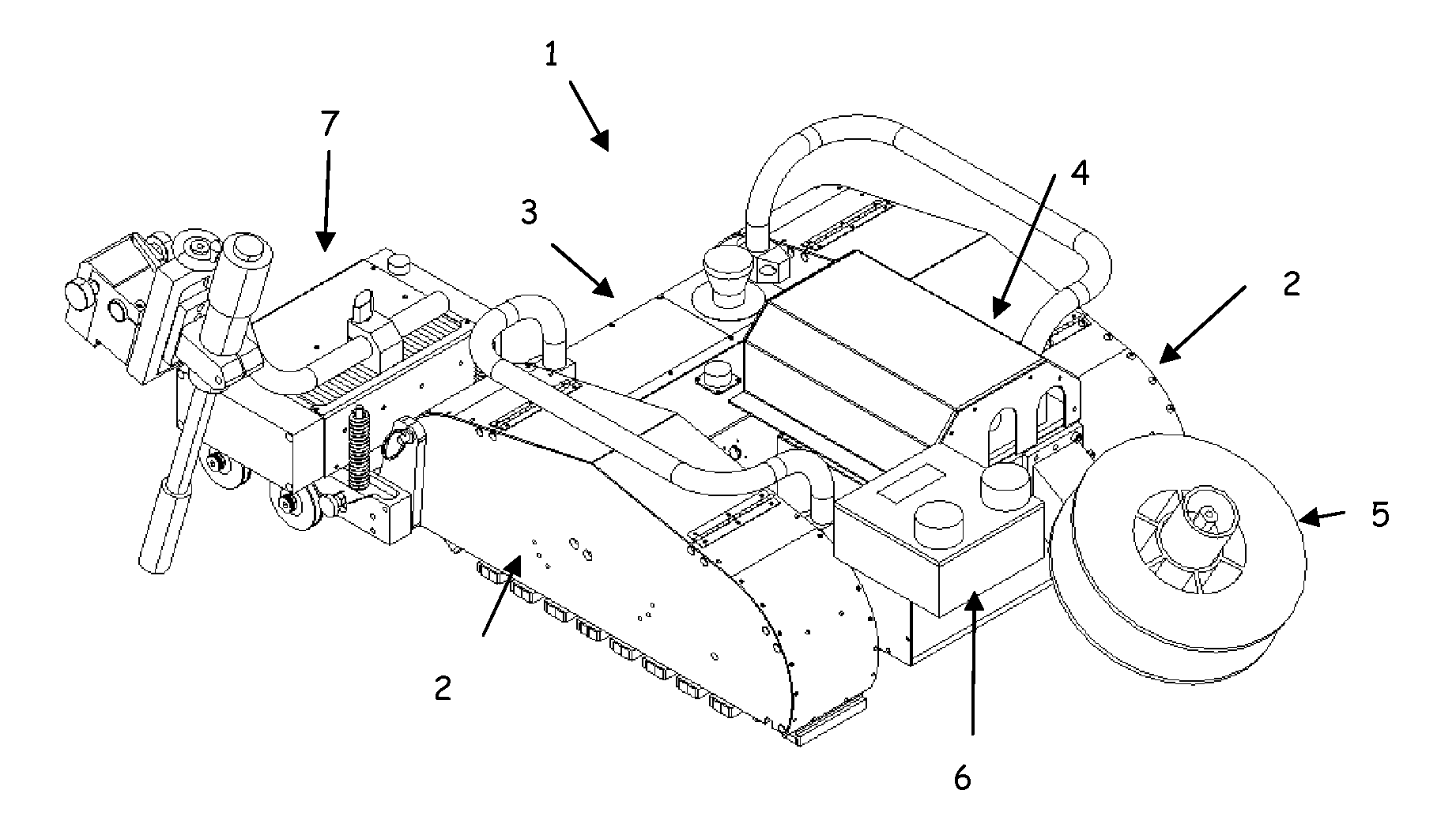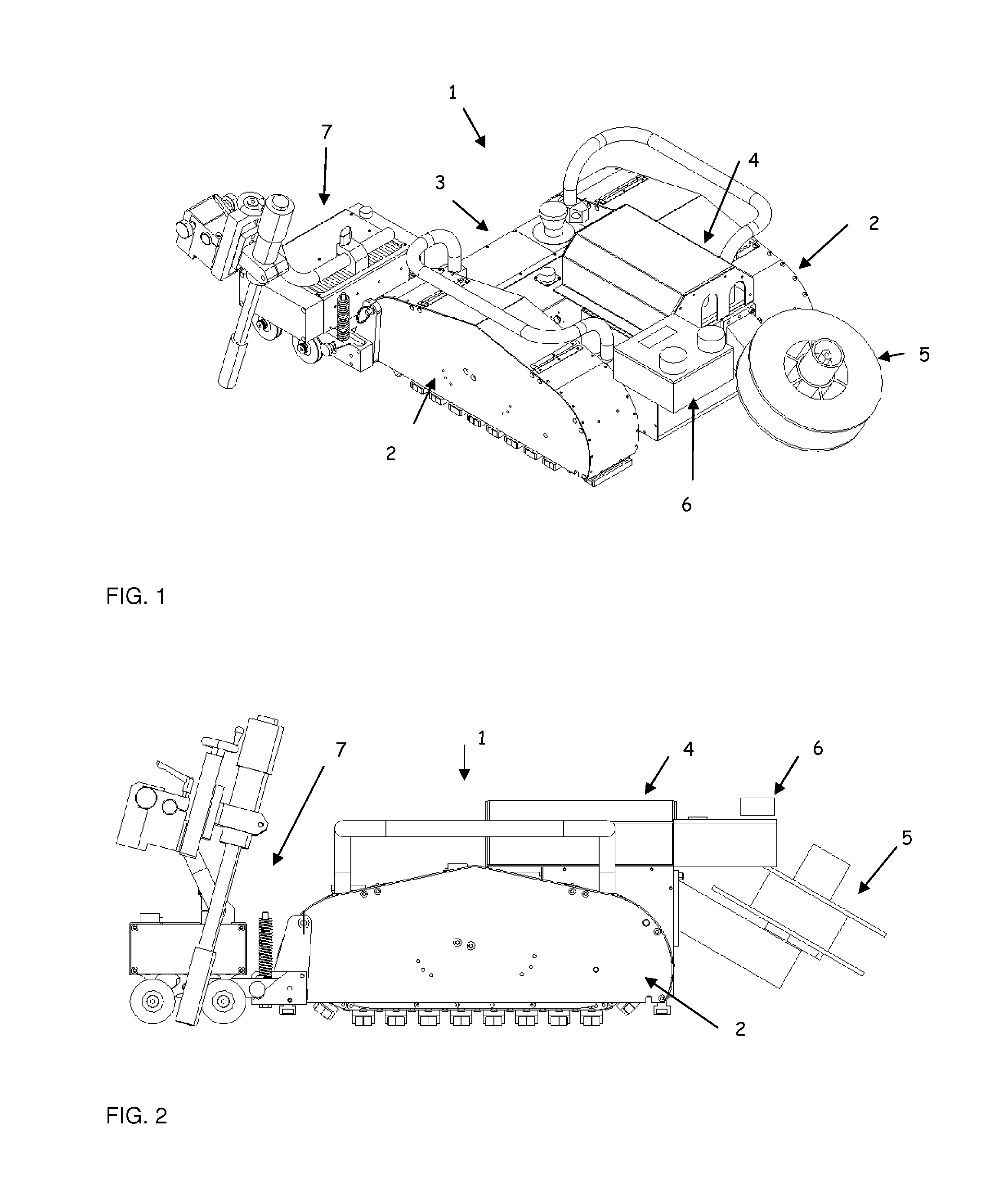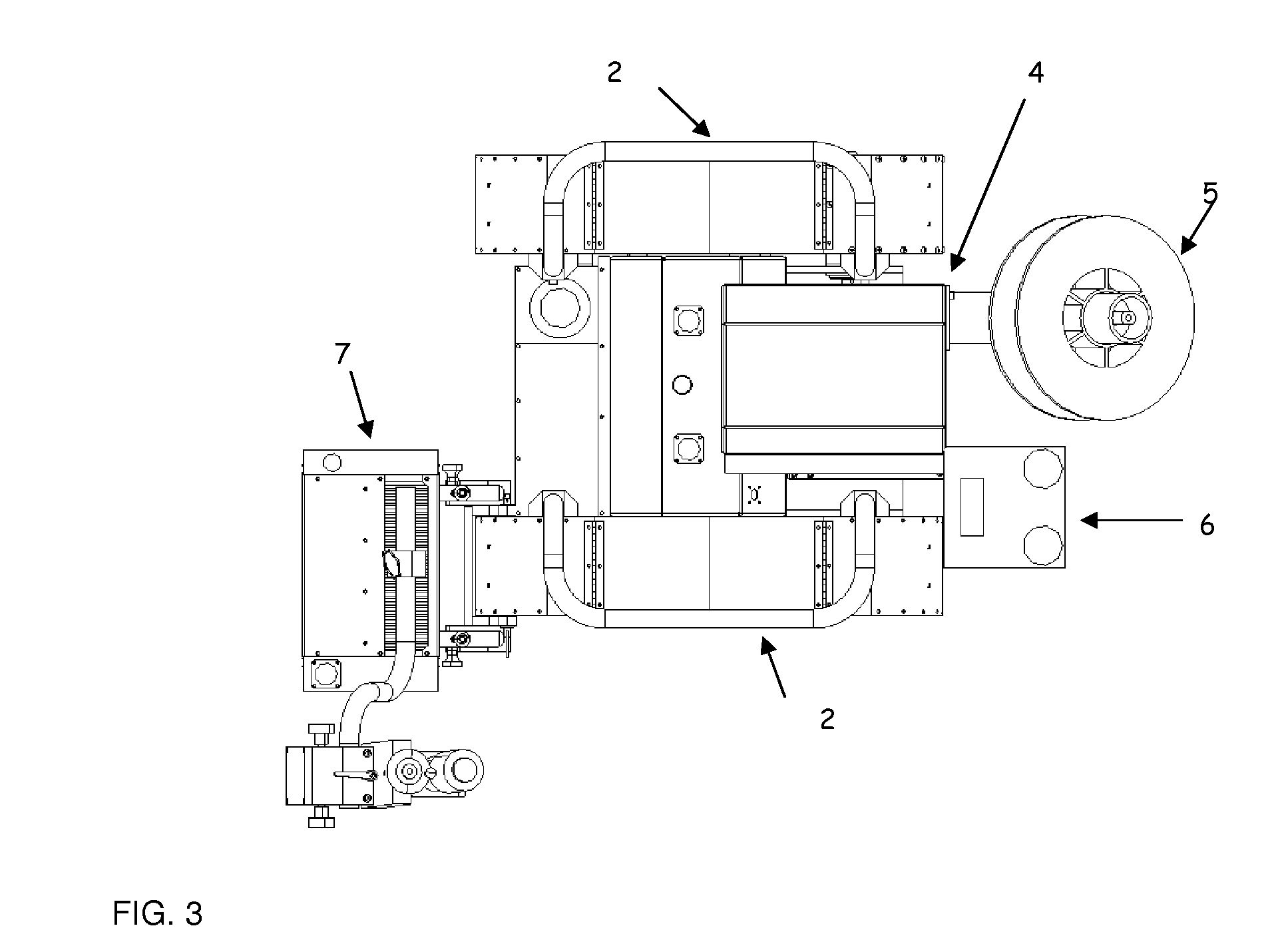Mobile, climbing robotic system to perform remote welds on ferrous materials
a robotic system and remote welding technology, applied in the direction of soldering equipment, manufacturing tools, auxillary welding devices, etc., can solve the problems of limited use, difficult access to many portions of a large structure, and the requirement to pre-install the mechanical guide, etc., to achieve the effect of high payload to weight ratio of the vehicle and effective us
- Summary
- Abstract
- Description
- Claims
- Application Information
AI Technical Summary
Benefits of technology
Problems solved by technology
Method used
Image
Examples
Embodiment Construction
[0047]Detailed descriptions of the preferred embodiment are provided herein. It is to be understood, however, that the present invention may be embodied in various forms. Therefore, specific details disclosed herein are not to be interpreted as limiting, but rather as a basis for the claims and as a representative basis for teaching one skilled in the art to employ the present invention in virtually any appropriately detailed system, structure or manner.
[0048]The mobile endless track welding vehicle (1) is illustrated in FIGS. 1, 2, and 3 here the endless track units (2) are connected to a chassis (3). The weld support tools can also be attached to the chassis and may consist of a commercial wire feed unit (4), spool of welding wire (5) and welding feed and / or power system controls (6). The universally-mounted torch manipulator (7) is attached to one of multiple mounting locations on a track unit or chassis. The track units are geometrically similar and symmetric; one is shown in FI...
PUM
| Property | Measurement | Unit |
|---|---|---|
| Pressure | aaaaa | aaaaa |
| Force | aaaaa | aaaaa |
| Magnetic field | aaaaa | aaaaa |
Abstract
Description
Claims
Application Information
 Login to View More
Login to View More - R&D
- Intellectual Property
- Life Sciences
- Materials
- Tech Scout
- Unparalleled Data Quality
- Higher Quality Content
- 60% Fewer Hallucinations
Browse by: Latest US Patents, China's latest patents, Technical Efficacy Thesaurus, Application Domain, Technology Topic, Popular Technical Reports.
© 2025 PatSnap. All rights reserved.Legal|Privacy policy|Modern Slavery Act Transparency Statement|Sitemap|About US| Contact US: help@patsnap.com



